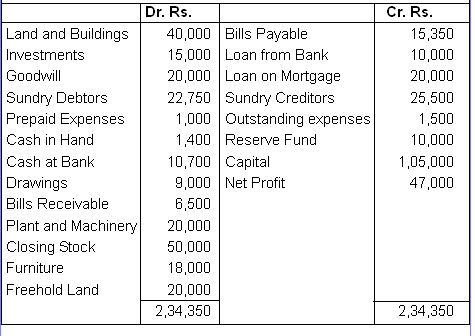Content

Suppose an asset for a business cost $11,000, will have a life of 5 years and a salvage value of $1,000. The straight line calculation, as the name suggests, is a straight line drop in asset value. The depreciation of an asset is spread evenly across the life. Technology can sometimes deteriorate more rapidly than expected. However, the downside is that it does not reflect the true cost of certain assets. You calculate the yearly deduction by multiplying a fraction by the asset cost.
What is the formula for annual straight line depreciation?
The formula to calculate annual depreciation using the straight-line method is (cost – salvage value) / useful life.
While it can be useful to use double declining or other depreciation methods, those methods also present more complex formulas, which can result in errors, particularly for those new to depreciation. Straight line basis is a method of calculating depreciation and amortization, the process of expensing an asset over a longer period of time than when it the formula to compute annual straight-line depreciation is: was purchased. Straight line basis is a method of calculating depreciation and amortization. Also known as straight line depreciation, it is the simplest way to work out the loss of value of an asset over time. As a business owner, knowing how to calculate straight line depreciation of your company’s fixed assets is crucial to your business’s success.
Other Depreciation Methods
In other words, companies can stretch the cost of assets over many different time frames, which lets them benefit from the asset without deducting the full cost from net income . With the straight line depreciation method, the value of an asset is reduced uniformly over each period until it reaches its salvage value. Straight line depreciation is the most commonly used and straightforward depreciation method for allocating the cost of a capital asset. It is calculated by simply dividing the cost of an asset, less its salvage value, by the useful life of the asset. Use this template to calculate an asset’s straight-line depreciation, as well as its impact on a company’s balance sheet and income statement, by general ledger account.

Using the same figure year after year keeps the bookwork simple and enables the quick calculation of expenses and deductions. It represents the depreciation expense evenly over the estimated full life of a fixed asset. You can use a basic straight-line depreciation formula to calculate this, too. The accumulated depreciation account has a normal credit balance, as it offsets the fixed asset, and each time depreciation expense is recognized, accumulated depreciation is increased. An asset’s net book value is its cost less its accumulated depreciation.
Services
In some scenarios, subsequent journal entries may change due to adjustments to the fixed asset’s useful life or value to the company as a result of improvements or impairments of the asset. For example, during year 5 the company may realize the asset will only be useful for 8 years instead of the originally estimated 10 years. The prior depreciation expense cannot be changed as it was already reported. Because organizations use the straight-line method almost universally, we’ve included a full example of how to account for straight-line depreciation expense for a fixed asset later in this article. Below are three other methods of calculating depreciation expense that are acceptable for organizations to use under US GAAP.

When you’re interviewing for accounting roles, employers will expect you to understand common business terms and formulas like straight line depreciation. What will set you apart, however, is an ability to bridge accounting theories with real-time business practice, working well with various teams, and considering the human impact behind your work. If you want those standout skills for your job search, you should consider an online master’s in accounting degree from Yeshiva University’s Sy Syms School of Business. Let’s say, for instance, that a hypothetical company has just invested $1 million into long-term fixed assets. Divide the estimated useful life into 1 to arrive at the straight-line depreciation rate.